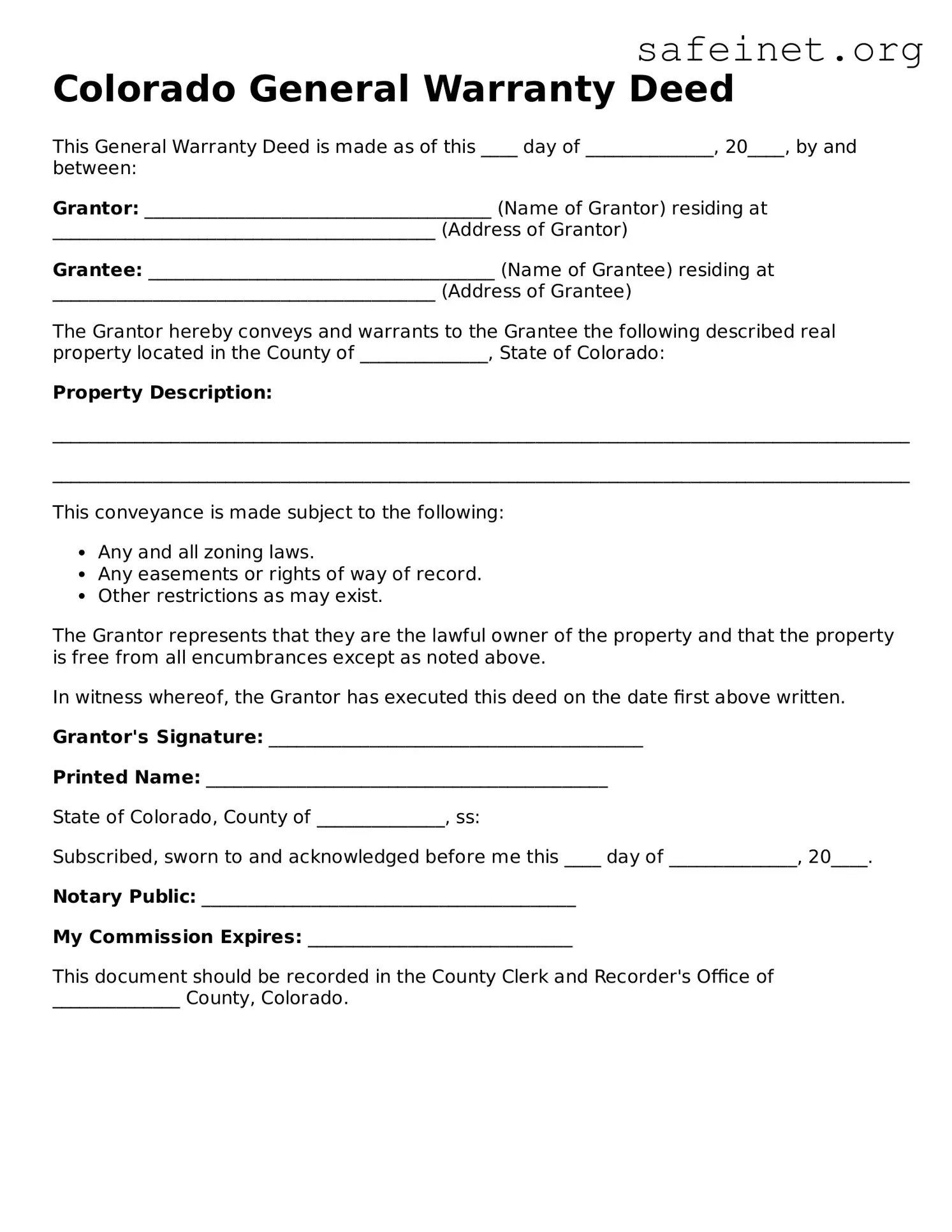Colorado General Warranty Deed
This General Warranty Deed is made as of this ____ day of ______________, 20____, by and between:
Grantor: ______________________________________ (Name of Grantor) residing at __________________________________________ (Address of Grantor)
Grantee: ______________________________________ (Name of Grantee) residing at __________________________________________ (Address of Grantee)
The Grantor hereby conveys and warrants to the Grantee the following described real property located in the County of ______________, State of Colorado:
Property Description:
______________________________________________________________________________________________
______________________________________________________________________________________________
This conveyance is made subject to the following:
- Any and all zoning laws.
- Any easements or rights of way of record.
- Other restrictions as may exist.
The Grantor represents that they are the lawful owner of the property and that the property is free from all encumbrances except as noted above.
In witness whereof, the Grantor has executed this deed on the date first above written.
Grantor's Signature: _________________________________________
Printed Name: ____________________________________________
State of Colorado, County of ______________, ss:
Subscribed, sworn to and acknowledged before me this ____ day of ______________, 20____.
Notary Public: _________________________________________
My Commission Expires: _____________________________
This document should be recorded in the County Clerk and Recorder's Office of ______________ County, Colorado.
